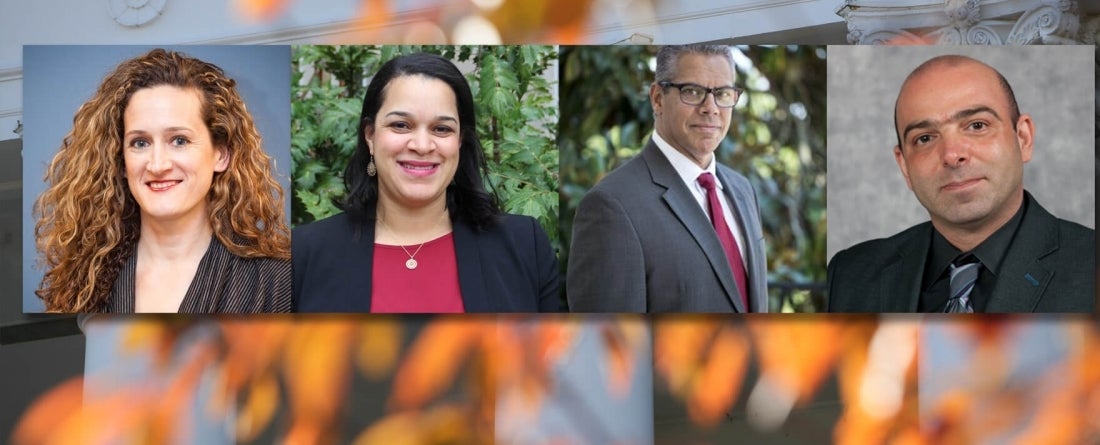
In these times, it's important for college campuses and faculty to create open discussions of injustice and inequality within the classroom. But how can they leverage the virtual learning environment to do so? As part of the 2020 NASPAA conference, School of Public Policy faculty participated in a panel discussion on how to use our unique circumstances to create space for open dialogues. The panel, “Belonging and Building Inclusion: In Classrooms, Among Colleagues, and Around Policy Tables”, was part of the 2020 virtual NASPAA conference and featured:
- Patricia Bory, assistant clinical professor and chief diversity & inclusion officer at SPP
- Alana Hackshaw, Assistant Clinical Professor at SPP
- Roger L. Worthington, professor and executive director at the University of Maryland Center for Diversity and Inclusion in Higher Education
- Mohamad Alkadry, professor and department head at University of Connecticut Department of Public Policy
“The pandemic brought us into students’ homes and exposed the privilege that some have compared to others," said Alkadry. "In the classroom, our students used to sit in the same chairs that cost the same amount of money, and you could hardly identify who was doing better than the others. Now with Zoom teaching, we are in the students’ homes.”
Instructors should use this as a unique opportunity to start conversations about equality, privilege, economic diversity and racial justice, the panel suggested. Hackshaw mentioned that she always incorporated themes of empathy within her courses, but keeping students engaged and willing to participate within these conversations can be challenging. Instructors should use disparities that were exaggerated by the pandemic or brought to light through the current racial justice movement as tools within the classroom. By relating diversity to relevant events, instructors can better encourage students to understand other perspectives.
Paneli also discussed both the broader role of diversity within higher education and the cultural changes that must occur. Worthington describes higher education as having a traditionally assimilationist view on inclusion, where diverse populations enter the institutions to learn the dominant culture. This preservation of this viewpoint, however, perpetuates systems of oppression and fails to encourage action against the status quo. Rather than tokenism, colleges should seek to dismantle elitism and other forms of systemic oppression that they continue, he said.
Hackshaw advocated that instructors and administrators begin to work towards this change by recognizing whose voices hold weight within their classroom and institutions. While diversity is a good start towards making progress towards social justice reform, it is insufficient and shallow when these perspectives are not provided a platform through leadership roles or opportunities to share their experiences, she said. Institutions need to also reevaluate their distribution of power and resources, and whether those resources are promoting equity and diversity as well.
Another recommendation that arose from the panel included instructors and administrators ask themselves:
- When these people show up, what happens to their voices?
- What happens to how they are valued?
- Do they comprehensively feel like they matter?
- What kinds of power do I need to be willing to give up to engage in a more transformative process?
The panel ended with an optimistic look towards the future and the next generation. The panelists agreed that they are concerned about the direction of society, but are inspired by the actions of today’s youth towards promoting justice.
“We would not be where we are in this moment without the strength of young people,” said Hackshaw. “We need young people. I see that everyday in the classroom.”
